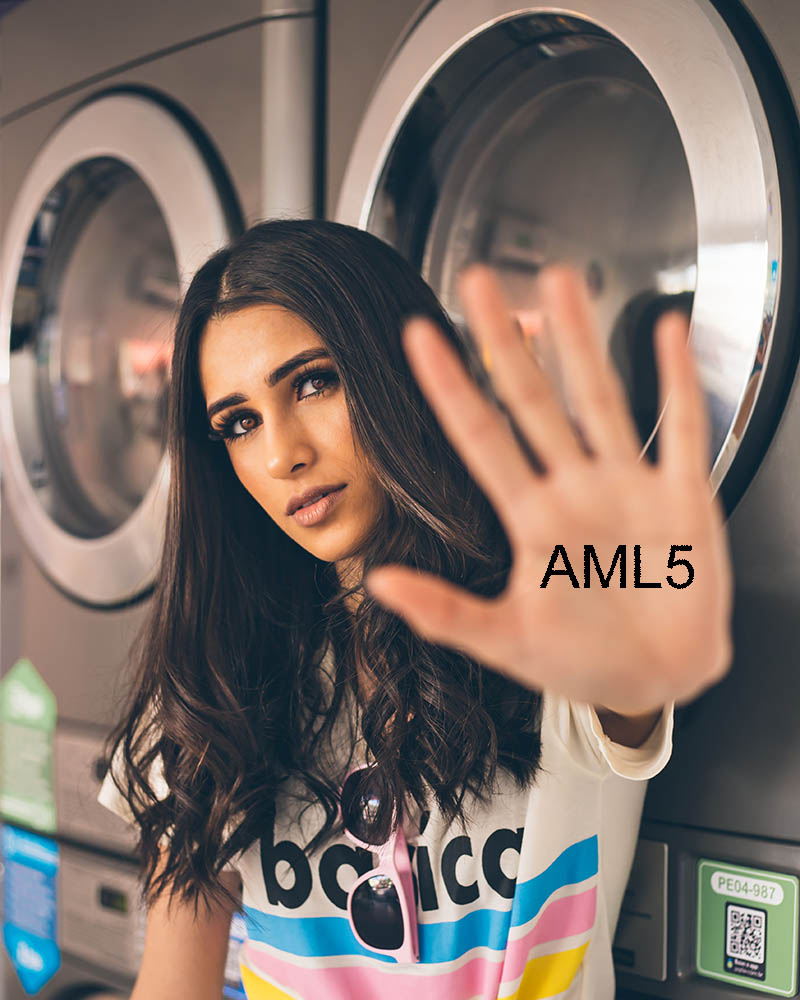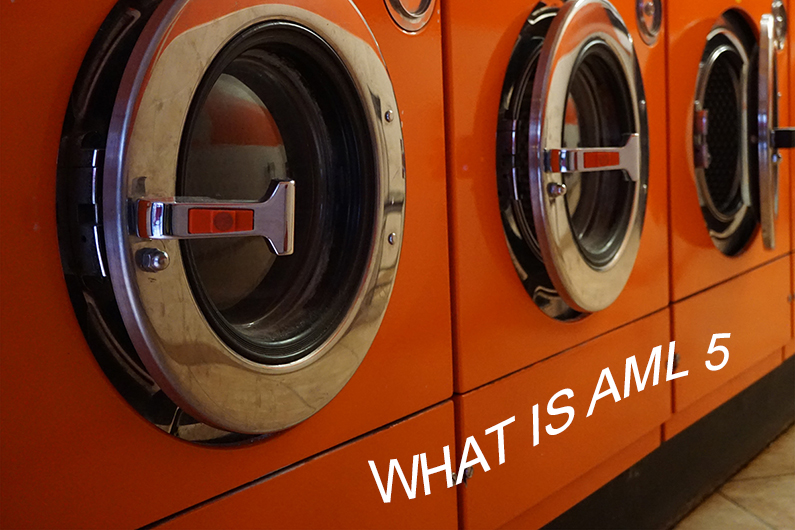AML5 / 5AMLD (5th EU Anti-Money Laundering Directive) is the new European Union Directive to prevent money laundering and terrorist financing. It was published in the Official Journal of the European Union in June 19th, 2018. This new directive establishes a legal framework to tackle the collection of funds for terrorist purposes, by requiring European Union Member States to identify, understand and mitigate the risks associated with money laundering and the financing of terrorism.
In addition to expanding coverage to virtual (crypto) currencies and electronic transactions, AML5-related updates affect the way EU companies conduct KYC (Know Your Customer) research.
For years, the European Union has been implementing and strengthening measures in order to combat money laundering and the financing of terrorism through the adoption of a legislative framework common to the Member States, which increases the security of the financial system.
With the latest update of the AML directive, the EU remains at the forefront of data protection and security regulations, focusing in this case in the need to control online customer verification.
Do you want to know what 5AMLD is and how it affects you? If you want to know more about 5AMLD download our whitepaper!
Background 5th anti-money laundering Directive: AML4
Rather than being a new Act, AML5 is a modification to the 4th AML Directive, which brought a set of tools focused on preventing the use of the financial system for illicit money laundering purposes.
AML4 expanded the scope of CDD Customer Due Dilligence, introduced the concept of PEPs and Sanctions, introduced the creation of central registers of beneficial owners and extended the coverage of AML controls to subsidiaries outside the EU.
The key measures introduced in the 4ht AML Directive were focused on:
- The assessment of the clients’ risk through Due Diligence, which may vary according to the level of risk: greater vigilance when the risks are higher, simplified measures when the risks are lower. AML4 included explicit lists of risk factors to be taken into account.
- Increased transparency through creation of beneficial owners’ national central registers;
- Extension of scope to the whole online gaming & gambling industry;
- Identify non-EU countries with weak anti-money laundering and anti-terrorist financing frameworks.
Following the publication of the AML4 Directive, there was a two-year period for Member States to adopt AMLD4 into their national legislation, with June 26, 2017 as the deadline for its implementation.
On June 19, 2018 the new AML5 directive was published and the deadline for its adoption is January 10.
![]() The Member States must transpose AML5 / 5AMLD by 10 January 2020
The Member States must transpose AML5 / 5AMLD by 10 January 2020
![]() The Member States must transpose AML5 / 5AMLD by 10 January 2020
The Member States must transpose AML5 / 5AMLD by 10 January 2020

What companies are subject to 5AMLD compliance?
The 5AMLD will apply to financial institutions (credit, payment methods, electronic money, investment), as well as insurers, advisors, notaries, lawyers or even real estate agents in the case of exceeding a total amount of transactions of 10,000 euros.
The main news in comparison with the previous directives is the requirement for exchange companies or cryptocurrency companies to strengthen their mechanisms for online identity verification within customer onboarding processes.
![]() Providers engaged in exchange services between virtual currencies and fiat currencies (that is to say coins and banknotes that are designated as legal tender and electronic money, of a country, accepted as a medium of exchange in the issuing country) as well as custodian wallet providers are under no Union obligation to identify suspicious activity.
Providers engaged in exchange services between virtual currencies and fiat currencies (that is to say coins and banknotes that are designated as legal tender and electronic money, of a country, accepted as a medium of exchange in the issuing country) as well as custodian wallet providers are under no Union obligation to identify suspicious activity.
Therefore, terrorist groups may be able to transfer money into the Union financial system or within virtual currency networks by concealing transfers or by benefiting from a certain degree of anonymity on those platforms. It is therefore essential to extend the scope of Directive (EU) 2015/849 so as to include providers engaged in exchange services between virtual currencies and fiat currencies as well as custodian wallet providers.
![]() Providers engaged in exchange services between virtual currencies and fiat currencies (that is to say coins and banknotes that are designated as legal tender and electronic money, of a country, accepted as a medium of exchange in the issuing country) as well as custodian wallet providers are under no Union obligation to identify suspicious activity.
Providers engaged in exchange services between virtual currencies and fiat currencies (that is to say coins and banknotes that are designated as legal tender and electronic money, of a country, accepted as a medium of exchange in the issuing country) as well as custodian wallet providers are under no Union obligation to identify suspicious activity.
Therefore, terrorist groups may be able to transfer money into the Union financial system or within virtual currency networks by concealing transfers or by benefiting from a certain degree of anonymity on those platforms. It is therefore essential to extend the scope of Directive (EU) 2015/849 so as to include providers engaged in exchange services between virtual currencies and fiat currencies as well as custodian wallet providers.
What are the main AML5 requeriments?
- Reduction of the limit for the identification of non-rechargeable prepaid products from 250 to 150 euros.
- Payment by anonymous transactions is limited to 50 euros, this applies to prepaid credit card and electronic money.
- AML5 also affects crypto currencies as well as e-wallets. The Cryptocurrency industry is therefore forced to comply with the AML / KYC regulations in the online customer identification process.
- Payments by credit card and bank accounts from third countries will only be accepted in the EU if there is an anti-money laundering regulation in the country of origin of these payment methods.
- Under the previous law (AML4), companies in the Member States were required to be “more stringent” with payments from countries with a high risk degree, while now people from third countries who want to carry out transactions are required to take different actions. Questions such as the origin of the money, the nature of the transaction or additional user information should be clarified before accepting the transaction.
Regulation 910/2014 (known as eIDAS: Electronic identification and trust services for electronic transactions) are recognised as valid means of identity accreditation.
What does 5AMLD mean for my business?
Although the Fifth Anti-Money Laundering Directive will not be fully applied until 10 January 2020, issuers of anonymous electronic money products, operators of cryptocurrency platforms and e-wallet providers would do well to address the issue as soon as possible.
Businesses will need to verify once more the identity of their customers when their risk status changes. In addition, full identity and AML checks must now be performed for customers who were previously outside the scope of the regulations.
Therefore, AML5 affects companies from multiple industries, such as online gaming operators, cryptocurrency platforms, cryptocurrency e-wallet suppliers, and insurance companies, which are forced to identify and verify the identity of customers through remote or electronic identification processes regulated and approved by the eIDAS Regulation.
How Mobbeel can help
Our KYC solutions comply with eIDAS regulation. Hence, we work with the most demanding companies in the Financial System. Thanks to Mobbeel’s technology, you will be able to comply with AML screening and monitoring by improving your security and mitigating the risks of your platform in terms of money laundering and financing of terrorism.
Furthermore, using our online customer verification system you will streamline your customers’ registration process, since it allows for digital onboarding in a matter of seconds, preventing users from dropping the registration process.
Remember: AML5 has a final deadline for its implementation of January 10, 2020. Still not using secure technology for customer identity verification? What are you waiting for?
If you are interested in learning more about what our technology can do for your company to meet AML5 requirements and verify your customers’ online identity, don’t hesitate to contact us!

I am a Computer Engineer who loves Marketing, Communication and companies’ internationalization, tasks I’m developing as CMO at Mobbeel. I am loads of things, some good, many bad… I’m perfectly imperfect.

GUIDE
Fully know your customers and drive the growth of your business
The journey between an organisation and its clients begins with proper verification, ensuring the safety of both parties. This KYC guide is essential for understanding the importance of knowing your users and complying with legal requirements.





